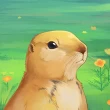There's a ghost in my house. I hear her singing.
A little girl. Why is it always a little girl?
The light through the window is barely enough to see by, but the sky outside is very pale. Clouds
...
[+]
I also loved rollie pollies, or as the adults called them: pill bugs. I would pick them up and place them on my palm, feeling their small legs scamper along my hand. Neither of these insects were to be found encrusted in glitter on a little girl's shirt, except maybe after a day of crafts gone wrong. Earthworms and rollie pollies were all too common and all too unbeautiful to be sold as merchandise. Not like the butterflies. It was harder to hold butterflies in my hands. They weren't around very often and they were always flying away. I insisted that I hated butterflies and told most of my friends about my disdain. "Why do you hate butterflies? They're pretty and colorful!" they'd retort, looking down at their shirts. I'd bring up my favorite creed of insect and was met with a chorus of ews and icks. I never fully understood why one was seen as beautiful and the other as disgusting.
In second grade science, there was a section all about caterpillars and the butterflies they'd eventually become. Our class assembled a butterfly garden, which was really just a white, circular net. The net came with a container of caterpillars who slept atop a tan mush we were informed was their food. The caterpillars resembled earthworms, just fuzzier. In a few days, what were once caterpillars now looked like Brazil nuts hanging from the top of the net. Waiting.
Two weeks later, the insects had hatched, and there were now five butterflies fluttering around the mesh bag. We took a closer look at them, their antennae and stringy legs all the more prominent, their scaly wings more detailed than we had ever seen.
We learned all about butterflies that year. We learned that in their quest for nectar, they pollinated flowers just like bees do. Except they don't have stingers and the butterfly's long proboscis allows it to access flowers that a bee can not, and its light weight allows it to land on the most delicate of plants. We learned that butterflies taste with their feet and breathe through the spiracles in their abdomen. We learned that in order to fulfill the rest of their nutritional needs, butterflies act as detritivores, consuming mud, blood, sweat, and decaying flesh. That was the truth of them. Butterflies are Lepidopteran insects characterized by the scales - not glitter - covering their bodies, their eating patterns less than ladylike. I learned all about butterflies and the caterpillars they once were that year.




